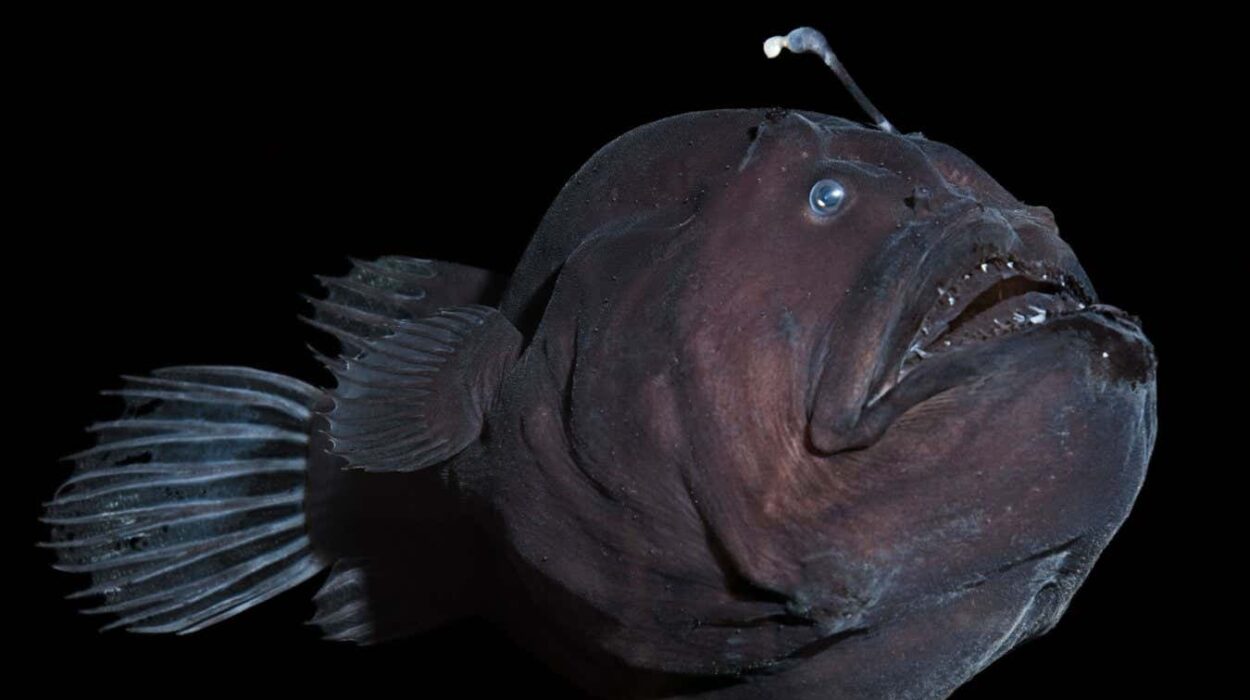Beneath the fallen leaves of rainforests, within the bark of ancient trees, and even in the quiet corners of deserts, tiny miracles shimmer with colors that rival gemstones. Beetles—the most diverse creatures on Earth—have evolved to wear coats of iridescent armor that defy imagination.
From metallic blues and fiery reds to the liquid gold sheen of their shells, colorful beetles are not just beautiful; they are living testaments to the artistry of evolution. Their colors can warn predators, attract mates, or serve as camouflage in sunlight-dappled forests. Some even owe their brilliance not to pigments but to microscopic structures that bend light—turning them into nature’s own holograms.
These 15 beetles represent the most dazzling examples of natural design—living jewels that blur the line between science and art. Each species tells a story of survival, adaptation, and wonder.
1. Jewel Beetle (Buprestidae) – The Shimmering Artisans of Light
When sunlight strikes the shell of a Jewel Beetle, it explodes into an iridescent dance of emeralds, sapphires, and gold. The Jewel Beetle family, known scientifically as Buprestidae, includes over 15,000 species spread across the globe.
What makes them glimmer isn’t pigment—it’s structure. Their exoskeletons contain microscopic layers that interfere with light waves, creating colors that shift with every movement. This phenomenon, called structural coloration, is the same principle that gives peacock feathers and butterfly wings their brilliance.
In Japan, Jewel Beetle shells have been used for centuries in decorative art, including raden lacquerware, where the beetle’s iridescent armor is inlaid into fine crafts. Beyond their beauty, these beetles play ecological roles as pollinators and decomposers, recycling nutrients back into the soil.
Each Jewel Beetle is a fragment of the rainbow—alive, intricate, and ancient, a miniature miracle of light and evolution.
2. Rainbow Scarab (Phanaeus vindex) – The Dung Beetle That Wears the Sun
Who would expect a dung beetle to be so spectacular? The Rainbow Scarab, Phanaeus vindex, turns the ordinary into extraordinary. Its shell gleams in metallic greens, blues, purples, and fiery reds, catching the light like molten jewels.
Found across North America, these beetles are essential recyclers, feeding on animal dung and returning nutrients to the soil. But their shimmering armor elevates them beyond humble service—they are symbols of transformation.
In ancient cultures, dung beetles represented rebirth. The Egyptians saw their rolling of dung balls as a metaphor for the sun’s journey across the sky. When one watches a Rainbow Scarab push its precious sphere beneath golden light, it feels almost mythic—nature performing a daily act of creation dressed in royal colors.
Their brilliance is not just a spectacle; it’s a story of purpose and beauty entwined.
3. Golden Tortoise Beetle (Charidotella sexpunctata) – The Living Mirror
If there were a beetle made of sunlight, it would be the Golden Tortoise Beetle. Commonly found in the Americas, this tiny wonder is no larger than a fingernail, yet it dazzles with its metallic gold sheen that shifts to ruby red when disturbed.
Its color-changing ability is one of nature’s marvels. The beetle’s transparent outer shell reflects light through layers of microscopic structures filled with fluid. When the beetle becomes agitated, it drains fluid from those layers, scattering light differently and turning its golden armor into a fiery crimson.
This living mirror is a lesson in impermanence and adaptability. Its beauty is fleeting yet ever-renewing, like the glint of dawn on morning dew.
The Golden Tortoise Beetle’s reflective magic isn’t vanity—it’s defense. The shifting colors help it confuse predators, blending with the leaves it feeds on. It’s both a masterpiece and a survivor, proving that nature’s finest art often hides in the smallest corners.
4. Rosalia Longicorn (Rosalia alpina) – The Azure Ghost of the Forest
High in the mountain forests of Europe lives the ethereal Rosalia Longicorn, a beetle so striking it looks like it walked out of a dream. Its powder-blue body, streaked with black velvet patches, gives it an almost painterly elegance.
Unlike metallic beetles, the Rosalia Longicorn’s blue comes from pigments that scatter light in soft, pastel tones. Its long, banded antennae sway gracefully as it moves along beech trees, where it lays its eggs in decaying wood.
This beetle is a symbol of wilderness and fragility. Once common across Europe, it is now endangered due to deforestation and habitat loss. Conservationists cherish it not just for its beauty but for what it represents—a glimpse of nature’s artistry that must be protected.
To see a Rosalia Longicorn in sunlight is to witness serenity in motion, a gentle spirit cloaked in the color of summer skies.
5. Madagascan Sun Beetle (Polybothris sumptuosa) – The Jewel of the Rainforest
The Madagascan Sun Beetle shines like a living gemstone in the dense rainforests of Madagascar. Its armor glows with emerald greens, bronze tones, and deep violets, shifting with each ray of light.
Its coloration is caused by multi-layered microscopic structures that manipulate light waves—creating shimmering, structural hues that never fade, even after death. This property makes these beetles prized by collectors and artists.
Despite their ornate appearance, Madagascan Sun Beetles are humble herbivores, feeding on decaying wood and vegetation. Their beauty serves no vanity; it is a byproduct of nature’s grand experiment in light.
Each one is like a fallen piece of the sky, gleaming among the moss and shadows—a silent symphony of evolution’s artistry.
6. Eupholus Beetle (Eupholus schoenherri) – The Neon Guardian of New Guinea
On the lush island of New Guinea, the Eupholus Beetle glows in shades of electric turquoise and cobalt blue. Its colors are so vivid they look unreal—as though painted by a human artist rather than evolved by chance.
This species belongs to the weevil family, known for their elongated snouts. The Eupholus’s coloration comes from crystalline layers beneath its cuticle, which refract light into vibrant blues and greens.
These beetles use their color as camouflage among tropical foliage and as a warning to predators—bright hues often signal toxicity. Their combination of beauty and defense makes them a triumph of natural design.
Holding one is like holding a fragment of a tropical dream—delicate, glowing, and impossibly alive.
7. Harlequin Flower Beetle (Gymnetis caseyi) – The Painted Mask
The Harlequin Flower Beetle wears the mask of a carnival performer. Its shell displays swirling patterns of yellow, black, and green that seem to dance across its back like brushstrokes.
Native to Central and South America, these beetles are pollinators, feeding on nectar and fruit. Their coloration varies widely—each beetle is a one-of-a-kind pattern, as though nature signs each with her own signature.
Their beauty is matched by their role in sustaining ecosystems. As they feed, they transfer pollen between flowers, ensuring forests continue to bloom. The Harlequin Beetle is not just decoration—it is a vital player in the cycle of life, wrapped in an artist’s touch.
8. Fiery Searcher (Calosoma scrutator) – The Metallic Hunter
Predators can be beautiful, too. The Fiery Searcher, a North American ground beetle, gleams in metallic greens and purples, with copper edges that flash like flame.
Unlike many herbivorous beetles, the Fiery Searcher is a fierce hunter. It preys on caterpillars and other insects, earning its name through relentless pursuit. Even its larvae are predators, feeding on harmful pests that threaten crops.
Its colors serve both intimidation and protection—metallic hues confuse predators, reflecting light in unpredictable ways. The Fiery Searcher embodies nature’s paradox: lethal yet stunning, functional yet ornamental.
It is proof that even in the chase of life and death, beauty endures.
9. Japanese Beetle (Popillia japonica) – The Green Jewel Invader
The Japanese Beetle’s emerald body and copper wings shimmer like sunlight on a lake. Originally native to Japan, it has spread across North America and parts of Europe, where it is often seen as a pest for its appetite for garden plants.
Yet, it’s hard to deny its allure. Its colors arise from microscopic structures in its shell that refract light into vivid metallic tones. Each beetle is a tiny mirror, reflecting the world around it in green and bronze.
Though it can cause damage to crops and ornamentals, its beauty has inspired admiration and art. In Japan, where it coexists naturally with balanced ecosystems, it is simply another note in the symphony of summer—a shimmering reminder that beauty and nuisance can coexist.
10. Fiddler Beetle (Eupoecila australasiae) – The Musical Pattern of the Outback
Found in Australia, the Fiddler Beetle gets its name from the violin-shaped pattern on its back. Its black body is adorned with brilliant green or yellow markings that appear painted by an artist’s hand.
These beetles feed on nectar and decaying fruit, helping to pollinate native flowers. Their coloration is both a warning and a celebration, a fusion of function and elegance.
In sunlight, their colors seem to glow from within, a reminder that even the arid landscapes of Australia produce living art. The Fiddler Beetle’s delicate hum as it moves among flowers adds music to its masterpiece.
11. Tansy Beetle (Chrysolina graminis) – The Emerald Treasure of England
The Tansy Beetle is a true British gem. Once widespread across England, it now survives mainly along the banks of the River Ouse in York. Its shell is a brilliant metallic green with copper highlights—a jewel of the meadows.
This beetle feeds exclusively on the tansy plant, making it vulnerable to habitat loss. Conservation efforts have turned it into a symbol of biodiversity preservation in the UK.
Its iridescent armor glows like a dewdrop catching morning light, reflecting the delicate balance between species and environment. To protect the Tansy Beetle is to protect beauty itself—a reminder that every living color on Earth deserves a place to shine.
12. Goliath Beetle (Goliathus regius) – The Giant Monarch
Among the largest beetles on the planet, the Goliath Beetle is a monarch of color and size. Native to African rainforests, it can grow up to 11 centimeters long, its patterned shell a tapestry of white, brown, and black markings that vary like fingerprints.
Though not metallic, its elegance lies in its bold contrasts and geometric symmetry. Males use their horn-like heads to battle rivals, while their massive bodies buzz through humid air like miniature aircraft.
Despite their imposing size, Goliath Beetles are gentle giants, feeding mostly on fruit and sap. Their striking beauty reflects strength and serenity coexisting—a reminder that grandeur in nature often wears exquisite armor.
13. Polychroma Beetle (Chrysina gloriosa) – The Desert Emerald
In the deserts of the American Southwest, among dusty mesquite trees, glows a beetle so radiant it seems unreal. The Polychroma Beetle, or Chrysina gloriosa, is often called the “Desert Emerald” for its swirling green patterns etched in silver.
Its reflective shell scatters light in multiple wavelengths, producing a shimmer like liquid glass. Scientists have found that its structure mimics advanced optical technologies—an evolutionary marvel that engineers still study for inspiration.
For the Hopi people, it symbolizes beauty born from hardship, a green flame in the dry expanse. The Chrysina gloriosa proves that even in arid silence, nature paints with light.
14. Malaysian Blue Weevil (Eupholus cyanescens) – The Sapphire of the Tropics
From the rainforests of Malaysia emerges the Blue Weevil, a beetle that gleams like polished sapphire. Its deep blue body, speckled with black, seems almost metallic, though its color is structural—light refracted through microscopic scales.
These beetles spend their days crawling along leaves, feeding on plant matter and basking in the humid air. Their vivid color helps them blend into tropical foliage under shifting light—a camouflage hidden within brilliance.
Collectors prize them, but their true worth lies in the wild, where they shimmer like drops of the ocean scattered among green leaves.
15. Titan Beetle (Titanus giganteus) – The Dark Colossus of the Amazon
Though less colorful than others on this list, the Titan Beetle earns its place through sheer magnificence. Native to the Amazon rainforest, it can reach nearly seven inches in length, making it one of the largest beetles on Earth.
Under sunlight, its mahogany-brown shell gleams with subtle iridescence—deep bronze hues that hint at hidden fire. Its powerful jaws can snap pencils in half, yet this giant rarely uses them except for defense.
The Titan Beetle’s understated beauty lies in its presence. In a world obsessed with bright colors, it reminds us that strength itself can shine—quietly, powerfully, endlessly.
The Science of Color in Beetles
Beetles achieve their stunning hues through two main mechanisms: pigmentation and structural coloration. Pigments absorb certain wavelengths of light, producing stable colors like red or yellow. Structural coloration, however, is far more intricate—it arises from microscopic patterns on the beetle’s shell that bend, scatter, and reflect light like prisms.
This is why iridescent beetles change color when viewed from different angles. Their shells are living optical devices, more advanced than any human-made paint. Some species even use polarization—reflecting light in unique patterns invisible to the human eye but visible to other beetles.
Their colors serve multiple purposes: camouflage among foliage, communication during courtship, and warning predators of toxicity. Beauty in beetles is never idle—it is evolution made visible.
The Symbolism of Beetle Colors
Across cultures, beetles have symbolized everything from rebirth to protection. In ancient Egypt, the scarab represented the cycle of life and the rising sun. In Japan, rhinoceros beetles are admired as symbols of strength and perseverance.
Their colors amplify these meanings—gold for divinity, green for renewal, blue for tranquility, and red for vitality. A beetle’s shine is not just light—it is legacy, woven into the human imagination for millennia.
Conclusion: The Endless Palette of Life
The world of colorful beetles is a world of wonder—a reminder that art and science are one. Each shimmering shell, each iridescent wing, tells a story written in the language of light.
They are nature’s living jewels, born from millennia of evolution, thriving in forests, deserts, and meadows alike. Their brilliance is not decoration—it is communication, protection, and beauty intertwined.
To see a beetle gleam under the sun is to witness creation’s brushstroke, a flash of eternity in miniature form. Long after human hands have forgotten how to paint such perfection, the beetles will continue to shine—quietly, eternally, gloriously—living rainbows crawling upon the Earth.






